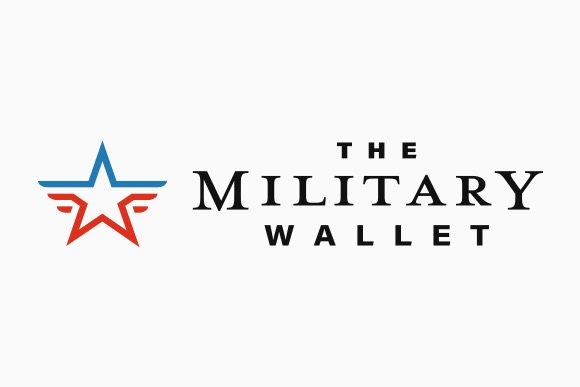Health insurance should be simple: If you get sick or injured, your coverage should give you access to medical care while shielding you from escalating health care costs.
But in reality, health insurance has grown far more complex.
Table of Contents
What’s The Best Health Insurance Policy?
Many factors impact your health coverage: National politics, technological innovations, income levels, private corporations, public services, employer human resources departments, physician recommendations — the list seems to grow more layered every year.
You have plan options through work, privately, and if you’re military or a part of another organization, maybe even more options through the government.
Let’s cut through the noise to find out what kind of health insurance best suits the needs of you and your family.
We’ll start with the Affordable Care Act.
Affordable Care Act Requirements
The Affordable Care Act of 2010, also known as Obamacare, created a new context for the national health insurance industry.
The law requires all Americans to carry health insurance.
The law also set higher standards for private insurers to follow, including:
- No Coverage Caps: Before the ACA, insurers could stop paying for health care after a policyholder reached a lifetime cap on expenses.
- No Pre-Existing Conditions: The law stopped insurers from denying coverage because a patient has a pre-existing health condition.
- Extended Access to Coverage: Because of the ACA, your children can stay on your insurance plan until they reach age 26.
- A Minimum Level of Care: Under Obamacare, private insurers must meet a minimum standard for coverage.
The Supreme Court upheld the law in 2012, but federal circuit court judges continue to argue various aspects of the law, especially its mandate that all Americans have coverage.
Despite this legal limbo, the healthcare.gov website continues to connect Americans with health care plans and with income-based tax credits to help pay their premiums.
At the same time, employer-subsidized plans, private insurance policies, and government-funded plans continue to provide insurance for millions of Americans.
The Affordable Care Act has given more Americans more health insurance choices, and when you have more options, it’s essential to have more knowledge about how health insurance works.
Types of Health Insurance Plans
Your health insurance policy type will help determine how you access care and how much you’ll pay for access:
Health Maintenance Organization
A Health Maintenance Organization (HMO) policy gives you access to a network of health care providers and limits policyholders to this network to control costs.
Your primary care physician will serve as the hub of your network and will be required to refer you to a specialist if needed.
Except in cases of emergency, an HMO provides no coverage if you go out of network for your care.
HMO Pros:
- Lower premiums
- Involved primary care physician
HMO Cons:
- Less patient choice
- No out-of-network coverage
Preferred Provider Organization
A Preferred Provider Organization (PPO) policy offers more flexibility. Like an HMO, a PPO sets up a network of care providers, but a PPO will allow you to receive care out of network.
You’ll pay less by staying in-network, but you can get some out-of-network coverage. You can also see a specialist without your primary doctor’s approval.
PPO Pros:
- More provider choices
- Out-of-network coverage available
PPO Cons:
- Higher premiums
Hybrid PPO-HMO Plans
Some insurance plans offer a middle ground between HMO and PPO coverage:
- Exclusive Provider Organization (EPO): Limits you to a network of providers, but it doesn’t require primary care physician referrals to a specialist.
- Point-of-Service Program (POS): Requires physician approval for access to specialists but doesn’t limit patients to a strict network.
High-Deductible Health Plans
A High-Deductible Health Plan, also known as catastrophic health care, places more responsibility on the patient to pay health care costs. The plan would kick-in only if you need hospitalization or other expensive treatments.
In insurance lingo, a deductible is an amount the patient pays before the insurance company starts paying for care. With a $15,000 deductible, for example, you’d pay the first $15,000 in health care costs for the year. After you reach that amount, the insurance policy would begin paying its share.
High-Deductible Health Plans work well when combined with Health Savings Accounts or HSAs. An HSA lets you set aside pre-tax money that can be spent on health care, including prescription drugs, physician fees, clinic or hospital fees, and even some medical supplies.
Because of the Affordable Care Act, these plans must also pay for preventive care such as routine checkups even before you reach the deductible.
HDHP Pros:
- More patient control
- Lower monthly premiums
- Preventive care coverage included
HDHP Cons:
- More out-of-pocket responsibility
- Cost Sharing Ministries
About a million Americans participate in a Health Care Sharing Ministry. These not-for-profit organizations spread individual health care costs across all members, insulating individual members from exposure to expensive health care costs.
Though not technically health insurance, membership in a cost-sharing ministry meets ACA requirements for being insured.
Leading ministries include Christian Healthcare Ministries, Medi-Share, Samaritan Ministries, Altrua HealthShare, and Freedom HealthShare.
Cost Sharing Pros:
- Low premiums
- Simplicity
Cost Sharing Cons:
- Spending caps remain in effect
- Pre-existing conditions can be excluded
- Premiums can increase
Medicare & Medicaid
The federal government helps fund each state’s Medicaid and Medicare programs which provide insurance coverage for specific populations:
- Medicare: Open to adults 65 and older.
- Medicaid: Eligibility based on income with rules varying by state.
Medicare / Medicaid Pros:
- Low or no premiums
- Low or no deductibles
Medicare / Medicaid Cons:
- Not always accepted
- Complex eligibility and enrollment requirements
When to Enroll in a Health Care Plan
Eligibility and enrollment requirements for a new health insurance plan will vary depending on your plan’s rules:
- Employer-sponsored plan: Typically, new employees eligible for health care can enroll on their hire date. Subsequent changes to your policy may be limited to a re-enrollment period, usually during the last month or two of each year.
- Private insurance: You should be able to enroll in a private plan and make changes to the plan anytime.
- Marketplace policy: The ACA created healthcare.gov, which allows Americans to use tax credits to help pay for health care premiums. The site has open enrollment near the end of each year. You can also apply for a particular enrollment period if you’ve lost health care or experienced a significant life change, such as a birth or death in the family.
- Medicaid: You can apply for coverage for yourself or your dependents any time you meet the income or other requirements such as a qualifying disability.
- Medicare: Medicare enrollment should be open during the three months before the month in which you turn 65 and during the three months after your 65th birthday month. You can also enroll later, but doing so could impact your level of coverage. Agr 65 is also the age you should enroll in Tricare for Life if you are a retired military member or qualifying survivor.
Comparing Health Care Plans
People who qualify for Medicare, Medicaid, or Tricare—a military-specific plan we’ll get into below—may not have much control over the details of their coverage.
But someone enrolling in a Marketplace plan, a private insurance policy, or an employer-subsidized plan should have more choices. These decisions will impact the cost and availability of care:
Deductibles
The word deductible refers to the amount you pay for health care each year before the insurance company starts paying.
A policy with a higher deductible will usually unlock lower monthly premiums, but be sure you’re comfortable with the deductible itself. If it’s too high, you may not be able to afford the out-of-pocket expenses.
Copayments
Along with deductibles, policyholders usually pay copayments each time they visit the doctor or pharmacy. Just like deductibles, a policy with higher copayments may allow for lower premiums.
Copayments usually range from $15 to $65, though they may exceed $100 to $200 for emergency medical care. Typically, copayments do not count toward your deductible.
Premiums
Premium is insurance-speak for the price you pay to remain enrolled in a health care plan. Factors such as your deductible and your copayments will help determine your premiums.
Generally, the more you pay in premiums, the less you’ll have to pay out of pocket. You should look for the right balance between regular premiums and per-service, out-of-pocket expenses.
Employers often help pay premiums for employees, and Marketplace plans allow you to use tax credits based on your income to reduce your premiums.
Along with copayments and deductibles, several other factors will influence the level of your premiums:
- Tobacco Use: Expect to pay up to 50 percent more if you use tobacco.
- Age: Older people can pay three times higher premiums than younger policyholders.
- State: Premiums vary some from state to state and sometimes by ZIP code.
- Plan type: PPOs usually cost more than HMOs, for example. Marketplace plans are assigned levels corresponding to performance — Platinum, Gold, Silver, Bronze (and Catastrophic).
People on the plan: A family plan, naturally, costs more than an individual or couple plan.
Military-Specific Health Care
For active-duty military personnel and their families, military health insurance runs through the government’s Tricare program.
Tricare connects military members and some retirees and veterans, along with their dependents, to government-sponsored health insurance.
Tricare currently has 11 different plans, but not all plans are available everywhere and to everyone. You can’t always choose the plan you like best.
About Tricare’s Plans
Active duty military members must enroll in a Tricare Prime plan, for example. Families of active-duty members can choose between Tricare Prime and Tricare Select:
- Tricare Prime: These plans work a lot like an HMO, managing costs by limiting which doctors you see and requiring your care manager to be involved in your health care decisions. To subscribe to Tricare Prime, you must serve in an area the plan serves. Alternative Prime plans are available for service members stationed overseas or in remote areas. You can learn more in this Tricare Prime overview.
- Tricare Select: These plans work more like PPOs. Members benefit from staying in the military’s network of health care providers, but they can go out of network for medical care if they want. Going out of network usually results in more out-of-pocket expenses. You can learn more in this Tricare Select overview.
About Tricare’s Costs
- Tricare Prime: These plans have no out-of-pocket costs for premiums or copayments if you stay in-network. As a result, military personnel can do their jobs without worrying much about health insurance. The patient would be responsible for occasional charges such as getting prescription medications delivered. The patient would be fully responsible for costs if he or she chose to seek care out of network.
- Tricare Select: Patients pay deductibles ranging from $51 to $308 and copayments for health care ranging from $15 to $61. Prices increase out of network as they would with any PPO plan.
Alternative Tricare Plans
Within the structure of Tricare Select and Tricare Prime plans, the military also offers the following plans for particular circumstances:
- Tricare Young Adult: For young adult dependents of military members; financed by premiums paid by the patient/family.
- U.S. Family Health Plan: Available only in specific areas, subscribers can use non-profit health centers rather than military-based providers.
- Tricare Reserve Select: A special premium-based plan for members of the Reserves.
- Tricare For Life: Helps supplement Medicare Part A and Part B coverage for subscribers 65 and older.
If you’re not sure which plan to choose, Tricare now has an online tool to help you narrow your choices.
How to Enroll or Change Tricare Plans
The military holds open enrollment each fall, usually for about five weeks from mid-November to mid-December, during which you can enroll in a plan or change plans.
You can also enroll or change plans within 90 days of a Qualifying Life Event such as retirement, discharge, becoming a parent, getting married, relocating, or being promoted.
Steps to Enroll or Change Plans
Enrolling or changing your enrollment always should begin with making sure your Defense Enrollment Eligibility Reporting System (DEERS) profile is up to date.
You can then enroll online or by phone using the Tricare Web site during Open Season. If you miss Open Season but have a Qualifying Life Event, you can request special enrollment by phone.
Health Insurance for Veterans
Tricare is essentially an employee-based health insurance plan for employees of the U.S. armed services.
As with any work benefit, Tricare won’t be available when you leave the military unless:
- You’re Retiring: Active duty retirees can usually continue using a Tricare plan as long as they live in an area the plan serves. Retirees can also access care through the VA.
- You’re Injured: Veterans with service-related injuries (or illnesses) can usually stay on a Tricare plan to help provide continuity in their ongoing care.
- You’re an OEF / OIF / OND Vet: Combat veterans from post-9/11 operations in Iraq and Afghanistan (Operation Enduring Freedom, Operation Iraqi Freedom, and Operation New Dawn) will get free medical care for five years after discharge. (Family members are not included in this plan.)
There are also a couple of specific military healthcare programs for certain transitioning servicemembers, including:
- Transitional Assistance Management Program (TAMP) – TAMP is a short-term medical care program offering 180 days of health care benefits to military members and their families when they separate from the uniformed services.
- Continued Health Care Benefit Program (CHCBP) – CHCBP is like a civilian COBRA Plan, offering servicemembers access to health care coverage for up to 18 months after leaving the military, however, military members have to pay the full premiums out of pocket, potentially making this a very expensive option.
Others leaving the military will transition to the Department of Veterans Affairs (VA) for medical coverage. You should start the process of transitioning to another health care program or veteran’s health insurance before leaving the military. You can start by getting in touch with your Tricare plan coordinator.
This article offers more in-depth information on health care options after leaving the military.
Overview of VA Health Care
Contrary to some common misconceptions, many veterans—not just combat veterans or veterans with a service-related disability—can access health care through the Department of Veterans Affairs.
Even National Guard members and Reservists who completed a call-up by federal order, excluding training missions, can qualify for VA health coverage.
Along with service requirements, the department considers household income to help determine your (and your dependents) level of coverage. You can learn more about VA healthcare eligibility here.
Bottom Line: Find A Plan To Fit Your Life
Knowing how health insurance plans work will help protect your budget while also giving you access to the care you need.
Health insurance needs can change quickly. An accident or an illness could have an immediate impact on your needs, for example.
You can’t predict or control the future, so find a plan capable of covering your current needs, considering out-of-pocket costs, premium costs, and access to health care providers.




Comments:
About the comments on this site:
These responses are not provided or commissioned by the bank advertiser. Responses have not been reviewed, approved or otherwise endorsed by the bank advertiser. It is not the bank advertiser’s responsibility to ensure all posts and/or questions are answered.
John Farrell says
Excellent and detailed information- keep up the great work!